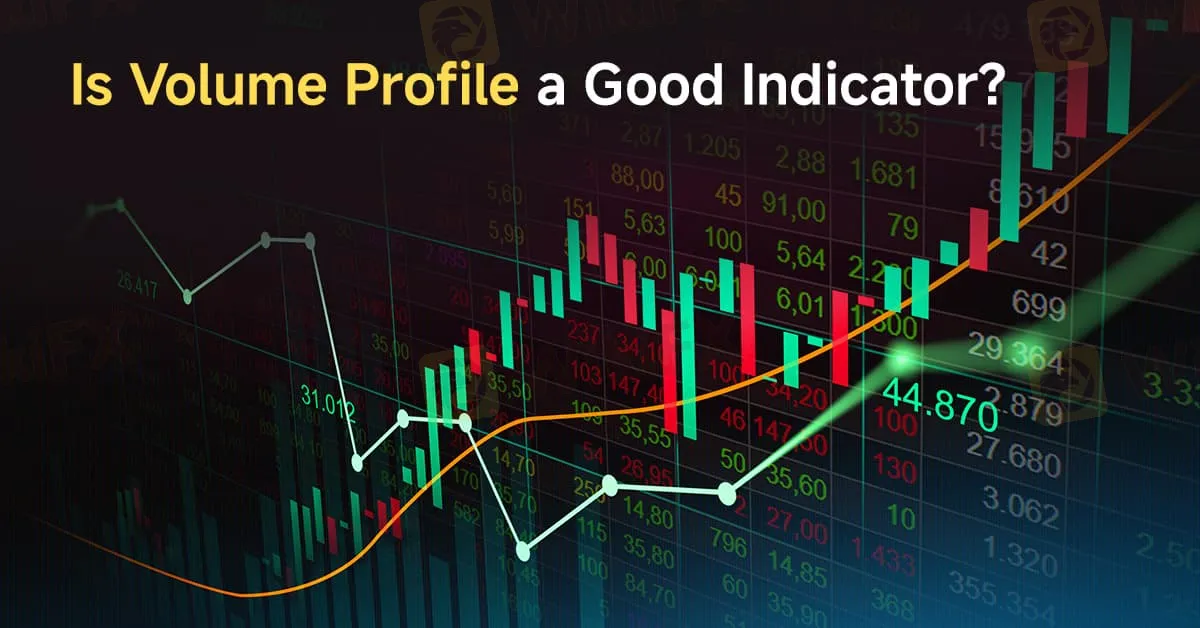简体中文
繁體中文
English
Pусский
日本語
ภาษาไทย
Tiếng Việt
Bahasa Indonesia
Español
हिन्दी
Filippiiniläinen
Français
Deutsch
Português
Türkçe
한국어
العربية
Is Volume Profile a Good Indicator?
Abstract:The Volume Profile shows the amount of volume traded at different price intervals over a specified period. It is displayed as horizontal bars, usually overlaid on the price chart. Each horizontal bar represents the volume that occurred in that price range over a specified time. The Volume Profile can be set to the current session, such as that day, or multiple sessions, like the total Volume Profile for the last twenty days.

What Is Volume Profile?
The Volume Profile shows the amount of volume traded at different price intervals over a specified period. It is displayed as horizontal bars, usually overlaid on the price chart. Each horizontal bar represents the volume that occurred in that price range over a specified time. The Volume Profile can be set to the current session, such as that day, or multiple sessions, like the total Volume Profile for the last twenty days.
Why Is Volume Profile Important?
Most Technical Tools Look at the Same Information
Most technical analysis indicators derive calculations from the price, which is why most of them lag. Because theyre derived from price, most indicators usually show information traders can see from the price chart alone. In short, most technical tools have everyone looking at the same information and chasing the same ideas, giving little to no edge.
Volume Profile is Different from Most Other Technical Tools
Volume Profile is not derived from price or lagging, which is rare in technical analysis. Volume Profile shows the activity that ultimately drives price movement—trading volume activity at different price levels. This is not data that traders can see from the price chart alone or even traditional volume bars.
Volume Profile Has Incredible Accuracy Down to the Lowest Timeframes
Most other indicators pick up a lot of meaningless noise on lower timeframes, reducing their accuracy. Volume Profile suffers less from this flaw because it uses “primary data” rather than being derived from the price or other data.
Incorporating Volume Profile into Your Trading Strategy
Decide How Far Back to Build the Volume Profile on Your Chart
For example, a 20-day Volume Profile setting will build the cumulative Volume Profile over the last 20 trading days.
Mark Out the Distribution Blocks and Ledges to Find Support and Resistance Levels
Determine Price Levels Above or Below to Be Comfortable Being Long or Short
Common Mistakes to Avoid When Using Volume Profile
Not Using Multiple Time Frame Analysis
Not Identifying Distribution Blocks
Overtrading Unclear Setups
Not Having a Trading Plan or Managing Risk
Pros & Cons of Using the Volume Profile Indicator
Pros
1. Volume Profile lets you see significant levels that often cannot be found from the price chart alone.
2. It is not a lagging indicator.
3. Traders can use Volume Profile independently or with other strategies.
Cons
1.It is a discretionary tool without fixed rules that takes time to learn.
2.Not all charting platforms support Volume Profile.
Conclusion
Volume Profile is a unique and powerful tool in the realm of technical analysis, providing insights into market behavior that other indicators might miss. By highlighting key price levels based on trading volume, it offers traders a distinctive edge. However, like any tool, it requires practice and understanding to use effectively. Integrating Volume Profile into your trading strategy can enhance your market analysis and trading decisions, but its essential to be aware of its limitations and ensure it fits within your overall trading plan.

Disclaimer:
The views in this article only represent the author's personal views, and do not constitute investment advice on this platform. This platform does not guarantee the accuracy, completeness and timeliness of the information in the article, and will not be liable for any loss caused by the use of or reliance on the information in the article.
Read more

A Guide to Intraday Forex Trading You Can't Miss Out
Intraday trading where everything happens in a day fascinates millions around India and worldwide. The drama, the hype, and the ups and downs resulting from those are nothing short of an adventure. Read this guide to ace the forex intraday trading game.

Top Forex Trading Strategies Every Trader Must Implement
Successfully navigating the fluctuating forex market landscape requires more than having a high-risk appetite. It requires effective strategies that assure you gains even during the market fall. Let’s go through the strategies many traders implement to gain.

Top Tips to Choose the Best Forex Broker in 2025
You need a solid forex broker to make the most of the currency fluctuation. The strategies they use to take you through the ups and downs of forex trading are beyond words. While the strategies may seem solid, the eventual gains matter more. That’s where you need to take notice of the forex brokers, how they approach, their fee structure, rating, etc. To help you evaluate forex brokers better, we have this guide for you. Read it to choose the right forex broker in 2025.

J. Safra Sarasin Acquires 70% Stake in Saxo Bank for €1.1 Billion
Swiss bank J. Safra Sarasin acquires 70% of Denmark's Saxo Bank for €1.1B, enhancing digital wealth management and global fintech presence.
WikiFX Broker
Latest News
SkyLine Guide 2025 Malaysia: 100 Esteemed Judges Successfully Assembled
Vantage Markets Review 2025: Trusted Forex and CFD Trading Since 2009
Why STARTRADER Is Popular Among Traders?
A Guide to Intraday Forex Trading You Can't Miss Out
CONSOB Blocks Access to 13 Unauthorized Investment Websites
TradingPRO: A Closer Look at Its Licences
The world could be facing another ‘China shock,’ but it comes with a silver-lining
New SEBI Regulations on Intraday Trading
Everything You need to know about Barath Trade
IronFX Broker Review 2025: A Comprehensive Analysis of Trustworthiness and Performance
Currency Calculator


